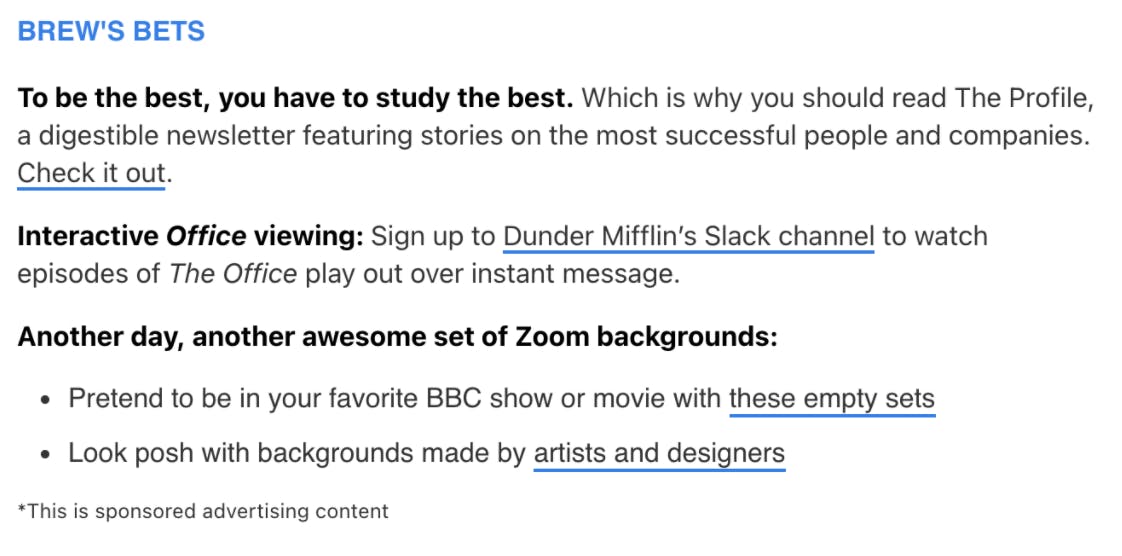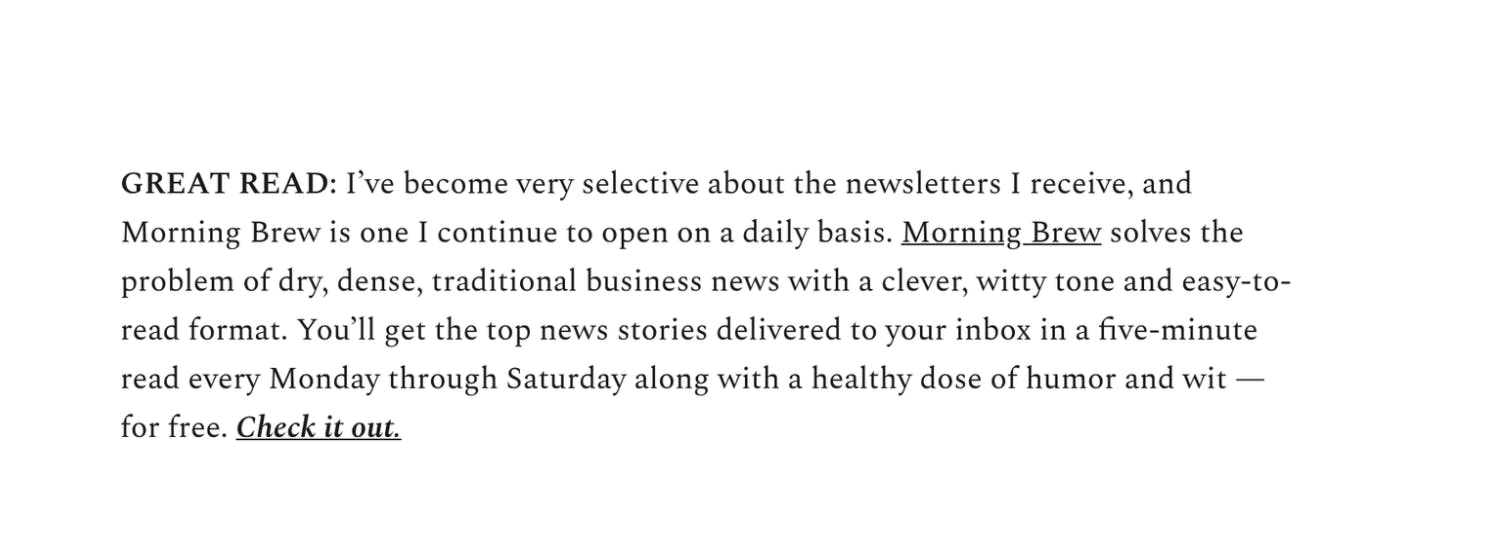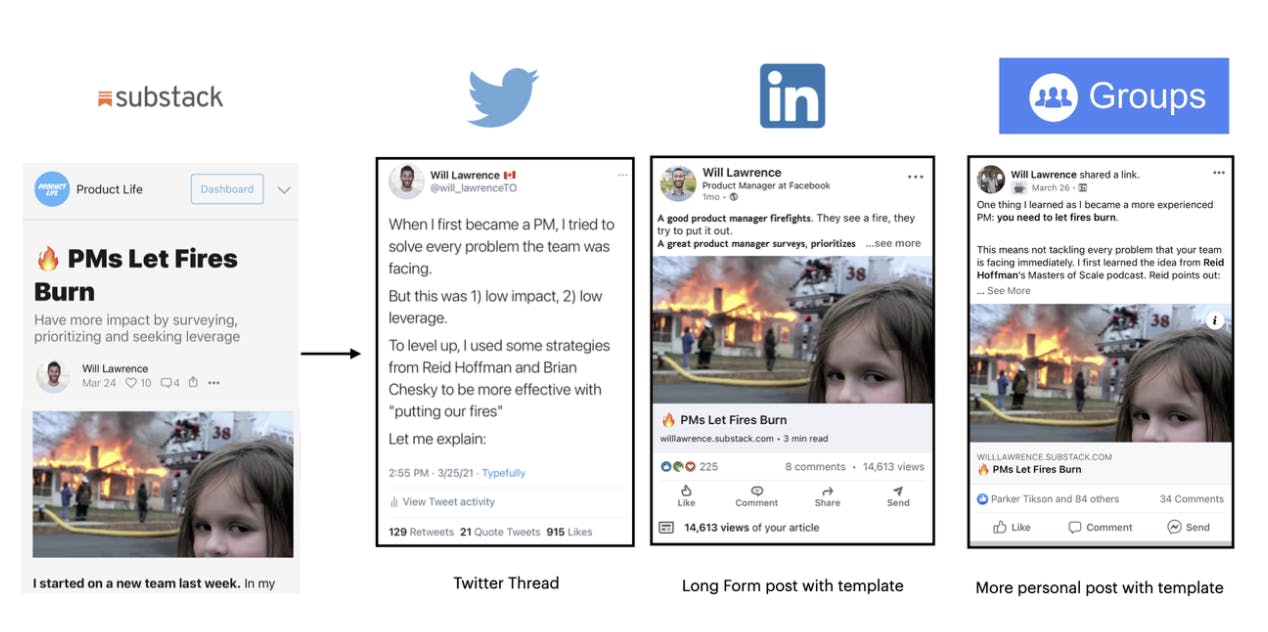3 winning strategies to grow your newsletter audience (with best practices from Rusty Foster, Polina Pompliano, and Will Lawrence)

Email newsletters are all the rage right now. Newsletter platforms like Substack have exploded in popularity, while newsletter businesses like The Hustle have leveraged their million-plus subscribers into acquisitions by tech giants like HubSpot.
Now that newsletters are like podcasts, i.e. everybody has one, you might feel intimidated about growing your audience. We spoke to 15+ successful newsletter creators to learn their winning growth strategies, including writers like Rusty Foster (Today in Tabs), Polina Pompliano (The Profile), Will Lawrence (Product Life), Anton Howes (Age of Invention) and Jason Mikula (Fintech Business Weekly).
Newsletter growth comes down to three winning strategies — consistency, collaboration, and content customization. While there are more tactics you can use, it’ll be extremely difficult for you to grow your newsletter sustainably without these three strategies.
1. Be consistent
Sending out your newsletter consistently increases opportunities for your readers to share your writing with their network. You can’t predict what will resonate with your readers until you publish newsletters regularly, so it’s important to keep at it.
Over 20% of newsletter creators who did Heyday Community AMAs cited consistency as critical to growing their audience.
When we spoke to Rusty Foster, he talk about the importance of "Do[ing] the thing consistently. I am pretty convinced that a lot of what success I’ve had is due to just being very consistent. Like I don’t set myself a length requirement or even a format, but my hard rule is just: stick to the schedule. This does two things: people get used to you being there every [day | week | whatever] and they start to look for it and second, it forces me to produce enough words that some of them are bound to be good."
Anton Howes feels similarly to Rusty. He mentioned that " the main thing that works is just to post fairly regularly. The more you post, the more chance one of them ends up being shared in ways you don't really expect. Posting is itself the main source of growth I think, and I basically can't predict what will do well and what won't. I expect it sometimes comes down to one influential person one day having time to read, and creating a sort of cascade effect as they tell other influential people and then tell others, etc., or another day they're busy and don't read it."
More creators echoed the importance of consistency to grow their newsletters, including Packy McCormick, Polina Pompliano, and Marie Dolle.
Foster adds that it isn’t just important that newsletter creators stay consistent with their output, but also that they ignore their feelings while they do so.
“Some (ok a lot) of days you’re probably going to feel like crap and not want to do it, but do it anyway because how you feel has almost no bearing on how the thing turns out. As a writer I think it’s common to feel like some kind of spark of inspiration has to be present for your work t be good, and it’s lovely when there is, but most of the time there isn’t forcing myself to write the thing on days when I deeply didn’t feel like it has definitely produced most of my best work.“
2. Collaborate with other newsletter creators
Swapping mentions with other newsletter creators is a powerful lever of growth. Readers tend to trust their favorite creators, so a recommendation from them is just as powerful as a word-of-mouth referral from another reader.
For Jeremy Caplan, “this has led directly to new sign-ups each time I write for another newsletter or another newsletter mentions my newsletter, so I consider it to be the most useful tactic.”
Polina Pompliano leveraged mentions in newsletters like Morning Brew and The Hustle to get her newsletter in front of more readers.
Jason Mikula points out that this tactic works only if a collab is authentic to the newsletter and its readership. If you take a haphazard approach in your collaborations, you could alienate both your audiences.
Mikula also recommends finding collab opportunities in places like Swapstack, where he’s met writers that he’s collaborated with in the past.


3. Customize your content for each social channel
When you tailor your content in platform-native ways, you can hook readers and incentivize them to check out your newsletter. Examples of content customization include turning a newsletter into a Twitter thread, an Instagram story carousel, and a 1-minute video summary on Tiktok.
Will Lawrence argues that the highest ROI system for content distribution is to customize their content in a style that’s native to each platform.
Kyle O’Brien believes "there is definitely an art + science to it. I’ve learned most of my engagement is through Twitter/LinkedIn so I optimize content there and really work to create bite-sized pieces that deliver value and hopefully entice interested parties to read more."
Custom social content increases the long-tail value of your newsletter. Instead of viewing your content in atomic units that are limited to each newsletter’s publication date, you can repurpose your content to have a longer shelf life for audience growth.

Start growing your newsletter with amazing content
If you focus on the quality of content in your newsletter first, you’ll be able to grow it successfully.
High-quality content incentivizes readers to share your newsletter on their social handles and with their friends and family. When you consistently produce high-quality content, other newsletter creators will see you as a creator they want to be associated with. Behind every strong piece of content, there is strong research. That’s where Heyday comes in. Heyday eliminates the busywork associated with research, making it easier to dig into new topics.
Ready for your own research helping hand?
Add the Heyday extension to have your research automatically saved, and resurfaced when you need it.